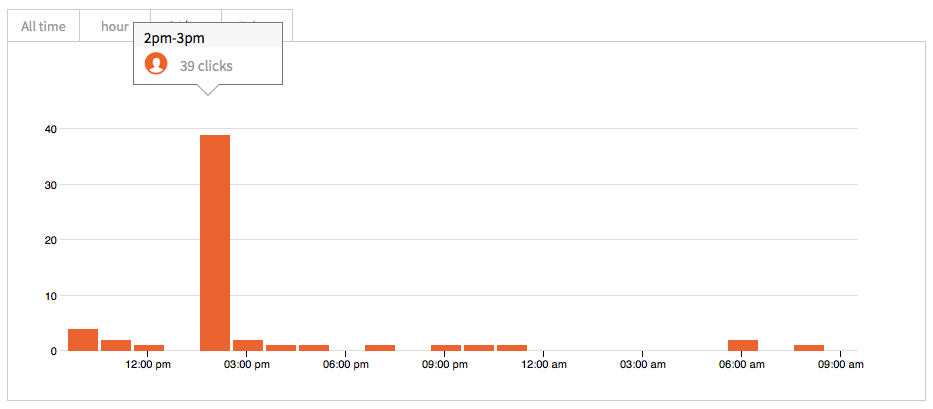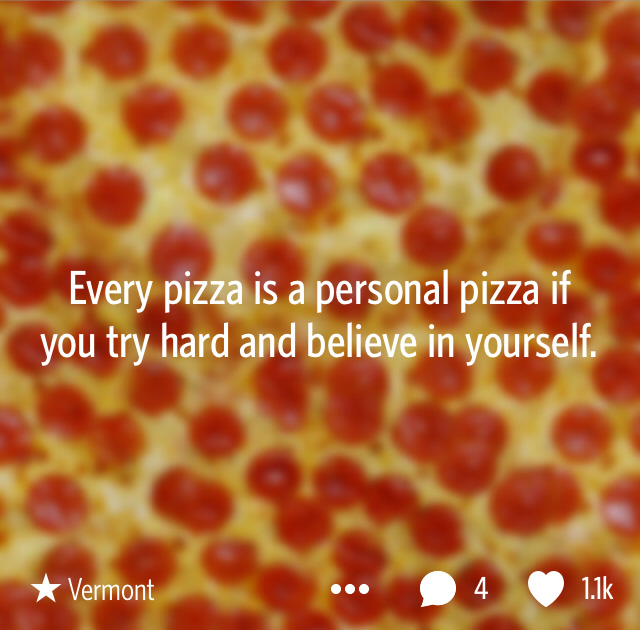Estoy Cansado
So the Chinese have a thing for sleeping in IKEA stores.
My question is, why don’t we all?

via The Telegraph
So the Chinese have a thing for sleeping in IKEA stores.
My question is, why don’t we all?

via The Telegraph
Sanderson thinks it’s more a case of evolving than dying. Talking to theObserver last week, he suggested there are now two types of hipster: “Contemporary hipsters – the ones with the beards we love to hate – and proto-hipsters, the real deal.” And herein lies the confusion.
“Historically, proto-hipsters have been connoisseurs – people who deviate from the norm. Like hippies. Over the years, though, they inspired a new generation of young urban types who turned the notion of a hipster into a grossly commercial parody. These new hipsters want to appear a certain way, to be seen to be doing certain things, but without doing the research. So they appropriated the lifestyle and mindset of a proto-hipster.”
—Morwenna Ferrier, The end of the hipster: how flat caps and beards stopped being so cool
I still think the term ‘hipster’ is silly because it doesn’t mean anything.
Let me rephrase that: hipster means so many things to so many people it has lost it’s meaning. Depending on who I’m hanging out, they’ll point out different types of people they think are hipsters. Based on anecdotal evidence, I can only conclude hipsters are non-conservative people, who might or might not dress in a quirky fashion. They also might or might not have beards and might or might not have dark-rimmed glasses. And suspenders.
Whenever someone says they’ve spotted some hipsters, there’s always a strong whiff of cynicism that comes with it and too much cynicism is not healthy.
Over at Slate, Reihan Salam sees the city I live in, San Francisco, as a selfish, selfish place:
Or consider San Francisco, one of the least-affordable major cities in the United States. San Francisco’s population is about 825,000. If it had the same population density as my hometown, New York City, it would instead have a population of 1.2 million. Note that I’m referring to the population density of all five boroughs of New York City, including suburban Staten Island and the low-rise outer reaches of Brooklyn, Queens, and the Bronx. A San Francisco of 1.2 million would not be a Blade Runner-style dystopia in which mole people were forced to live cheek-by-jowl in blighted tenements. San Francisco at 1.2 million people would still be only half as dense as Paris, a city that is hardly a Dickensian nightmare.
I’m not an urban planner and I don’t have a silver bullet solution to the housing problem here in San Francisco, but something has to give. What San Franciscans have been experiencing in recent years is what cities like New York have been dealing with for decades and decades and decades.
My wife was born and raised in San Francisco proper, and agrees with me that it’s more of a suburban metropolis than a city. San Francisco needs to put on it’s big boy and big girl pants and start acting like a top tier city. A better transit system than the shitty BART we currently have, more development and more infrastructure.
As beneficial as expanded development could be for San Francisco, I can’t help but think about when—not if—the next earthquake hits the Bay Area.
Perhaps all these smart, young brains in Silicon Valley should use their collective brainpower to focus on earthquakes and not how to charge people for fucking parking spaces.
username: combustion
This new wave is also opportunistic. But in a much hotter real estate market with lower start-up costs, it’s driven as well by a taste for “authenticity,” “character” and other buzzwords today’s tech firms love. At the same time, constructing anything new here is a major headache. The city is crippled by an obstructionist set of city planning rules — the consequence of local activism and a Talmudic bureaucracy. Legislation from the mid-’80s caps the total amount of new office space that can be built here. All this contributes to why adaptive reuse has taken hold.
—Michael Kimmelman, Urban Renewal, No Bulldozer, NYTimes.com
So is Kimmelman saying these “obstructionist” rules are a good thing? Seems the tech nerds moving in would likely pass over new buildings and offices anyway (if they did exist) for “authentic” existing spacings.
Min Ming Lo breaks down all the different share icons in existence today.
Personally? I’m digging his “milkshake” proposition. I even like the unintentional reference to There Will Be Blood (or was it?).
At the end of the day, icons—like English, Chinese or Spanish—are a language. In case of the Share icon, there’s different ways of representing it. Some representations are more obscure than than others, but they’re dialects and dialects are neither right nor wrong, they just are (well, technically, it’s it’s called soda, not pop).
![]()
Outside of the blogs of technology and design people I follow daily, Quora is one of the most thoughtful places I’ve found on the Web. It’s one of the few places I’ve found where the comments are honest without being snarky or mean-spirited.
I think of the answers to Quora questions as the Bizarro version of Youtube and tech blog comments—they’re not filled with anonymous vitriol.
And it’s not only the quality of the answers I appreciate on Quora but the diversity of topics too.

Great advice from Kickstarter project creators.
Yesterday I sent out a link to my Kickstarter backers to the digitial version of the book I published. The book is in PDF format. It’s “open”, no DRM protection, nothing.
I used bitly to track clicks and I watched them trickle in slowly (as expected) until around 2pm when—in a 15-minute time span—this happened:

Of the 192 total backers to my project, 106 received this link to the book. It’s possible there was a flurry of genuine activity for 15 minutes, but it looks shady. There’s no proof of referral traffic (the link wasn’t posted on another website), but it’s intriguing.
I’m not getting bent out of shape about this. If people are sharing the link, they’re sharing the link. There’s nothing I can do about it.
I myself have torrented movies, music and books from time to time, so I have to put my money where my mouth is and let it happen, if it’s going to happen.
From the WSJ:
Twitter is having no trouble signing up users. But some new research provides an update on the size of an ongoing problem: getting people to tweet.
A report from Twopcharts, a website that monitors Twitter account activity, states that about 44% of the 974 million existing Twitter accounts have never sent a tweet.
I think Twitter is an extremely powerful platform, but I find there’s a lot of noise on it—even when I follow smart, thoughtful people. Interesting links and thoughts are interspersed with trying-to-be-witty one-liners and jokes.
The other aspect I find annoying as fuck about Twitter is how mainstream media have taken it over (one of the more recent reasons I don’t watch much television). The barrage of “follow us” and “use hashtag: #ilovecloroxbleach” really get on my nerves.
Slate: Here’s Why Developers Keep Favoring Apple Over Android
This map showing the locations of 280 million individual posts on Twitter shows a depressing divide in America: Tweets coming from Manhattan tend to come from iPhones. Tweets coming from Newark, N.J., tend to come from Android phones.
If you live in the New York metro area, you don’t need to be told that Manhattan is where the region’s rich people live, and the poor live in Newark. Manhattan’s median income is $67,000 a year. Newark’s is $17,000, according to U.S. Census data.
The tech press keeps saying Apple needs to release a low-cost iPhone.
Maybe none of them know what they’re talking about.
The noise I’m referring to:
John Paczkowski: Why Build a Cheaper iPhone? Because It’s Stupid Not To.
CNet: Apple needs a low-cost iPhone, says analyst
Enough About China, Apple Also Needs A Low-Cost iPhone In The US
Cult of Mac: Why Apple Needs A Low-Cost iPhone More Than Ever
As Gruber points out, Apple has been offering low-cost iPhones for a while now.



via Secret
The first implementation of our internal Show & Tell reminds me of Dribbble. For that matter, it reminds me of a good portion of online communities. They require little to no thoughtful input. It’s more common than not that a single click or tap is all you need to do to show your support for a photo, status update, or design snippet, even though what’s really behind that interaction is, and should be far more complicated.
Dribbble absolutely favors presentation over critical thought and in that way it works more like pornography than graphic design. An image of slider controls or buttons without context is like picture of a set of tits (or a dick, hey, I’m equal opportunity)—in both cases context doesn’t matter. What matters is only how good they look.
Image taken from Michal Parulski
My favorite error I see made over and over again on Dribbble (and many portfolios) is when people skew their mobile app designs away from the viewer (see above). Now the actual user interface doesn’t even matter, the pixel porno designer wants you to appreciate how well he/she designed a composiiton of an interface.
Update: I should note, I’m not against porn. Porn is awesome and if you want some great graphic design porn, I suggest FFFFOUND.